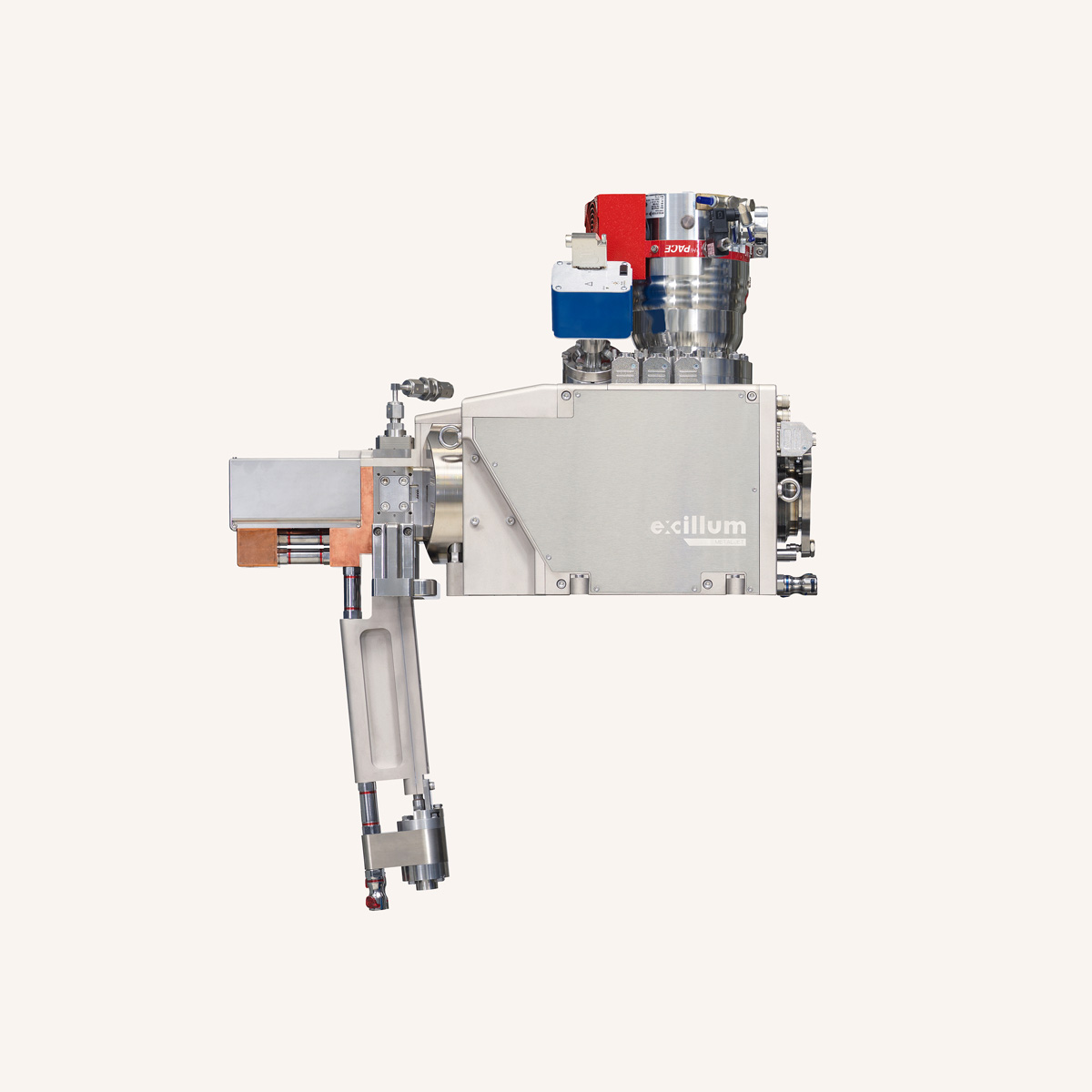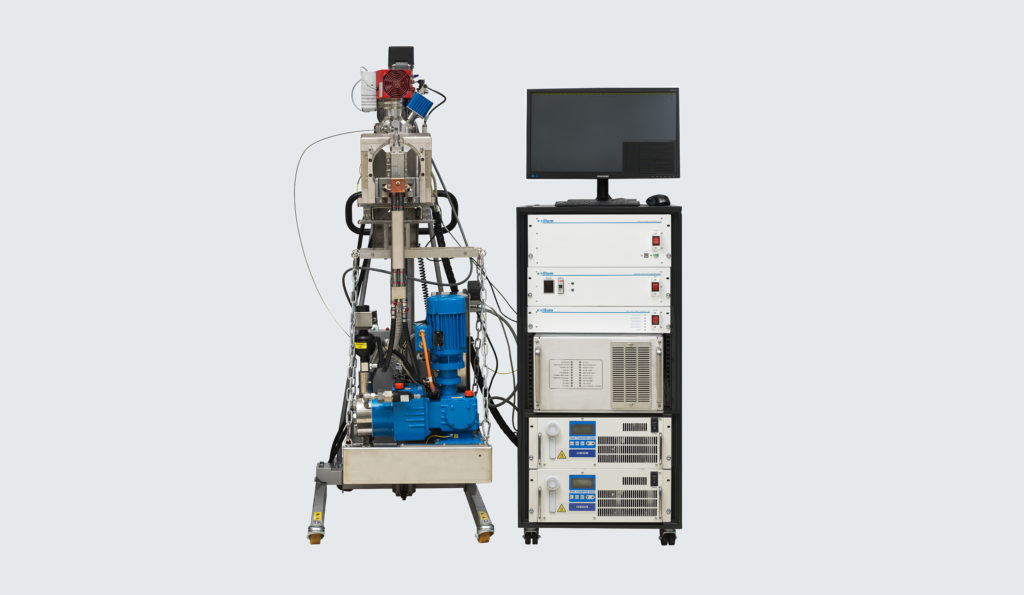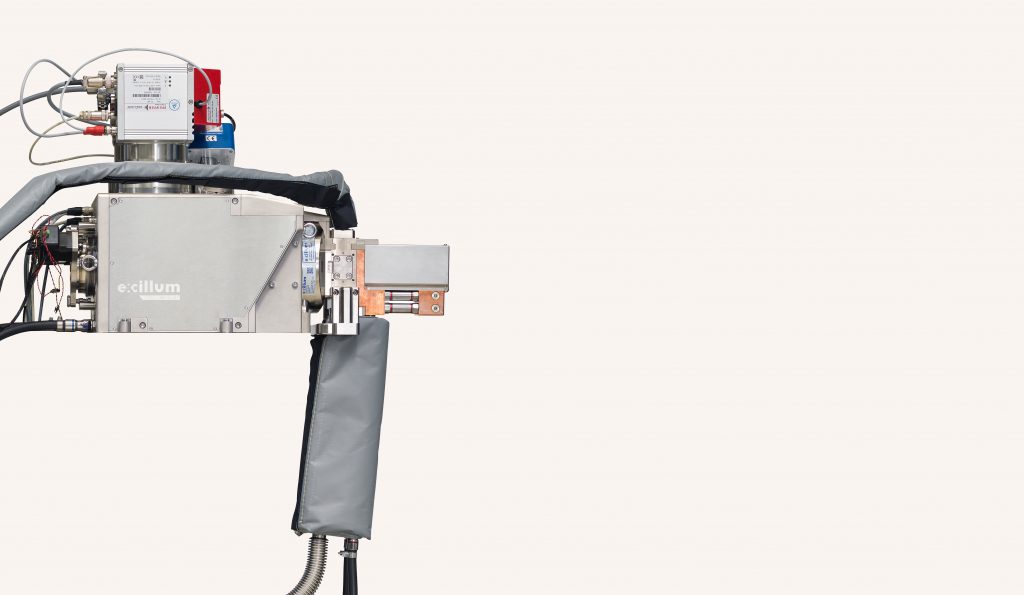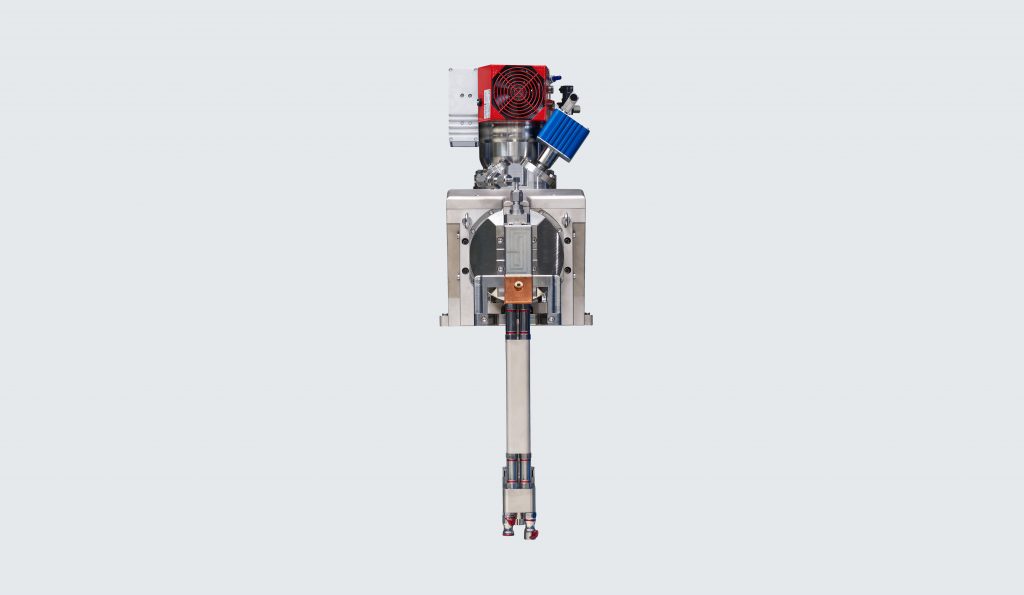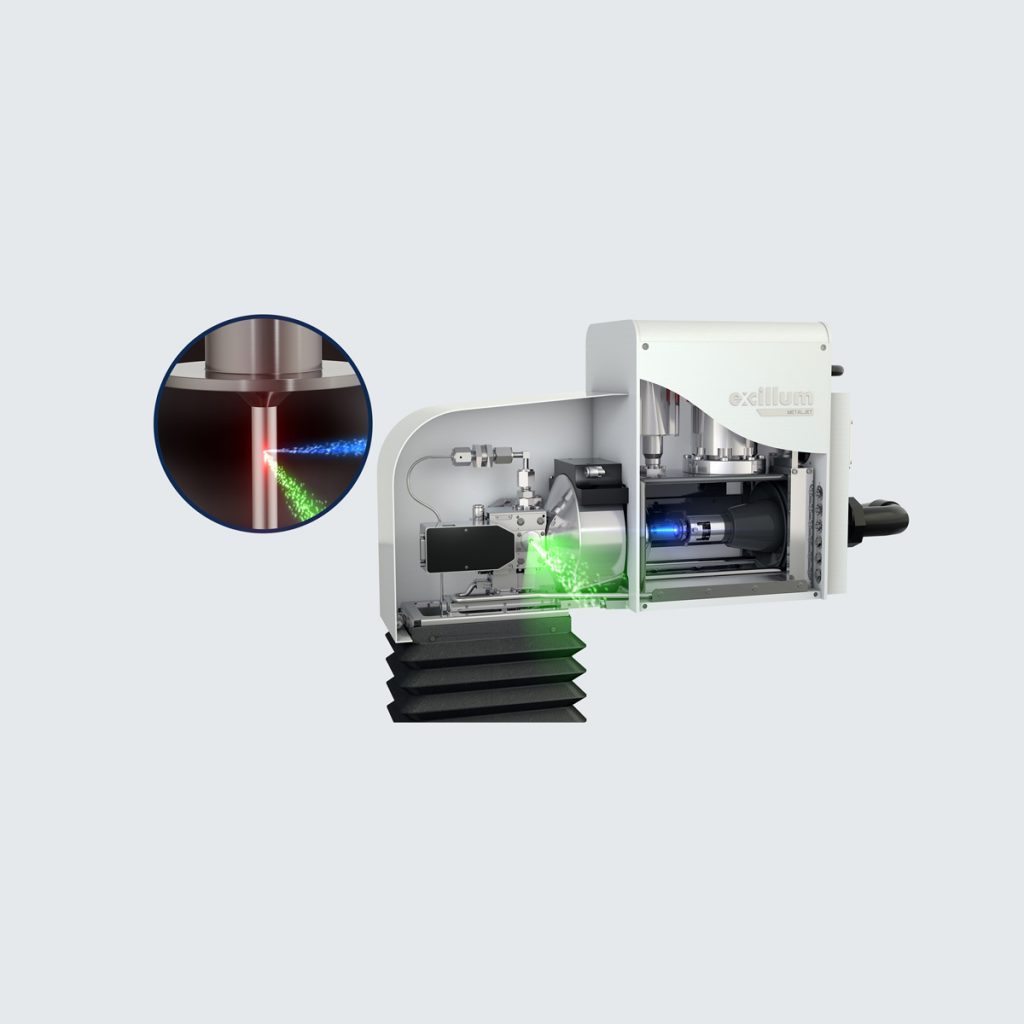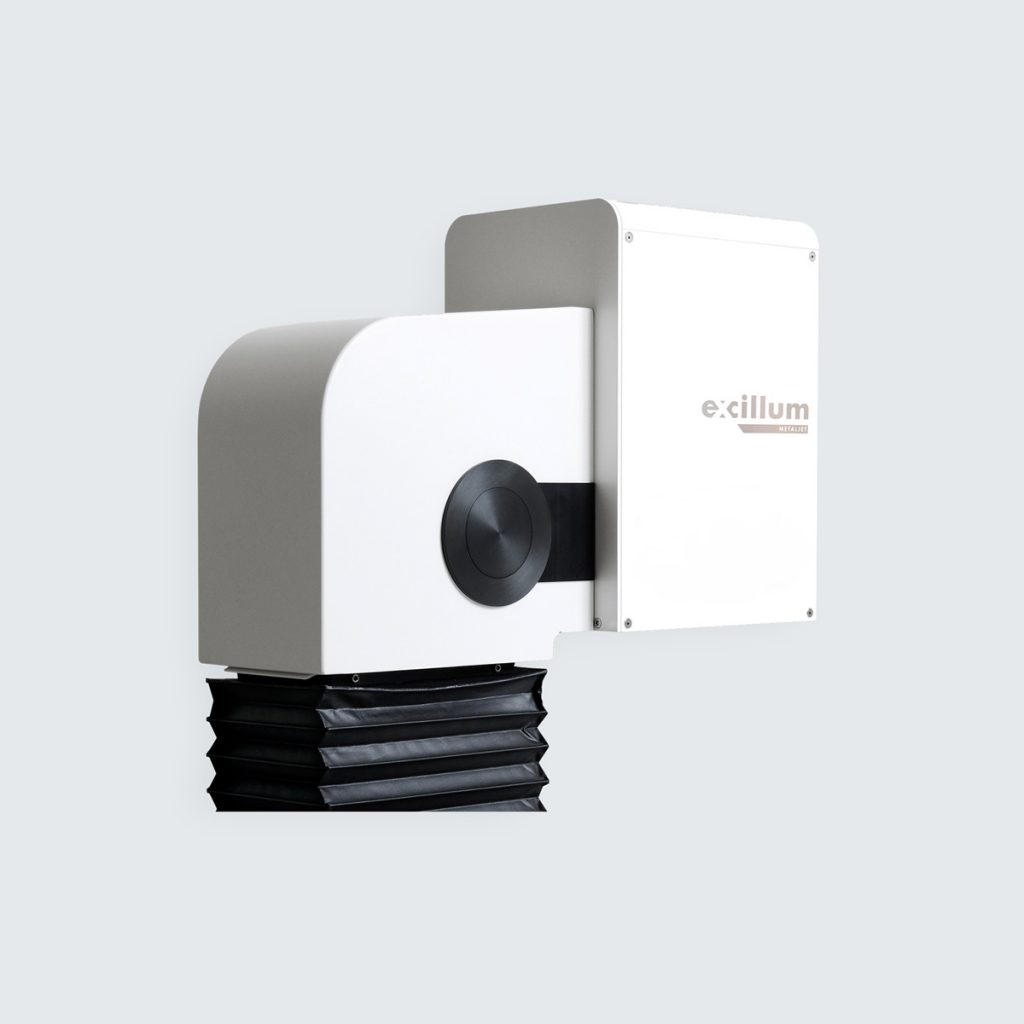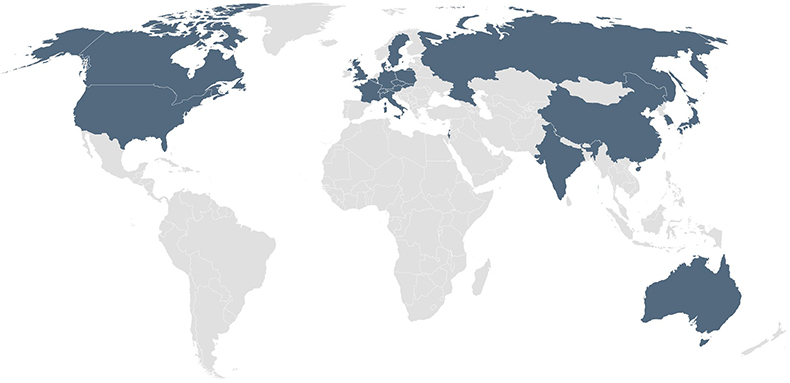The Excillum MetalJet E1+ 160 kV is our latest addition to our high-brightness MetalJet series of X-ray sources.
At 1000 watts, the new MetalJet E1+ delivers 17 times more X-ray flux across a broad spectral range compared to a 30 W conventional tungsten-solid-anode microfocus source with the same 30 µm spot size. In the spectral range of 24-29 keV where the indium and tin characteristic emission lines are present, the flux advantage is as high as 100 times.
